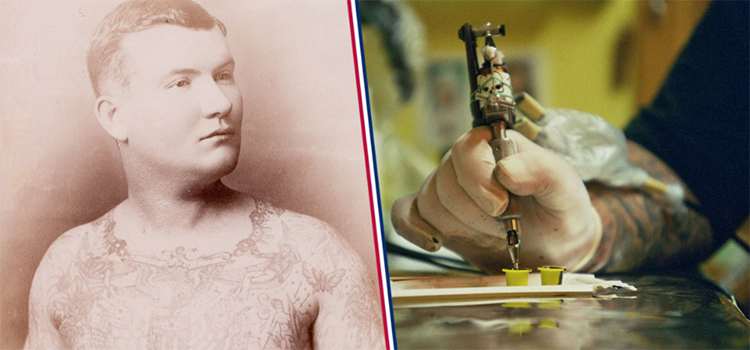With all of the fantastic inventions that
Though Thomas Edison is known for giving the world a number of fantastic inventions, you’ll always see an asterisk next to patents for which he’s credited. Sure, the history books give him praise for inventing the phonograph and the incandescent lightbulb, but not without mentioning that he had limited involvement with his other 1,093 patents — or worse, acquired them by dubious means.
Edison was no stranger to patent disputes during his lifetime. He’d quickly squash challenges that arose between himself and other inventors, mostly by leveraging his vast wealth and well-crafted public image — with one notable exception: a Navy veteran. Samuel O’Reilly gave Edison a taste of his own medicine and gave the world a device that’s now synonymous with the United States Navy: the electric tattoo machine.
Samuel O’Reilly was born to impoverished Irish immigrants in Connecticut in 1854. As a teenager, he and two friends were arrested and sentenced to two years of hard labor for burglary. He needed to do something better for himself when he was released, so he enlisted in the Navy.
His time in the Navy was brief, but it was there that he first got introduced to the rich legacy of tattoos. At this time, tattoos were highly stigmatized as being just for drunk and disorderly troops. In those days, it was uncommon to see someone who hadn’t served with any ink — but it was even rarer to find a sailor with bare skin. O’Reilly looked past the nonsense and recognized that the tattoos the sailors wore were beautiful pieces of art.
Some reports say he deserted the Navy after a few months; others say he served his time and learned the art of tattooing while in. While it’s unclear which is true, we’re skeptical about the desertion — he was never charged for it and he made a living tattooing other sailors.

We do know for a fact, however, that he’s responsible for his famous quote: “A sailor without a tattoo is like a ship without grog: not seaworthy.”
(U.S. Navy photo by Seaman Ryan McFarlane)
O’Reilly’s life after service was far from stable. After serving time in prison for a robbery committed by his family members, he finally got around to starting his own tattoo parlor in New York City in 1888.
Meanwhile, Thomas Edison had created a new invention called the “Electric Pen.” The idea behind the machine was that it could punch a hole in multiple pieces of paper so a writer could write on each piece. Needless to say, it never really caught on or worked most of the time, so it was scrapped and forgotten about for around fifteen years.
Samuel O’Reilly saw the potential for this device in use as a quicker alternative to the “hammer and needle” method of tattooing. He adapted the basic idea with a stronger tubular shaft, an ink reservoir, and a fitting for multiple needles. It was patented on Dec. 8, 1891, as the “tattooing machine.” Suddenly, people from the around the world sought him out for new ink.

Even with everyone traveling the world to see him, one third of all customers were still sailors.
(New York Herald, Dec. 12, 1897)
This understandably infuriated Edison, but the design was different enough that it didn’t constitute an infringement of patent. A former-friend-turned-rival of O’Reilly’s, Elmer E. Getchell, also claimed to have created the tattoo machine, and the case was brought to Federal Court.
Getchell backed Edison in the case, claiming that O’Reilly wasn’t responsible for the tattoo machine. The courts determined that since his patent included the ink reservoir, it was vastly different from Edison’s, effectively giving O’Reilly the undisputed claim on the device.
O’Reilly was open about his modification of Edison’s original electric pen, but he still managed to use Edison’s own game against him in the court of law and proved that the tattooing machine, indeed, belonged to him.

And sailors have been using his design ever since.
This article originally appeared on We Are The Mighty
More From We Are The Mighty
Navy Vying to Be the Most Inked Service with New Tattoo Policy
7 Things to Do Before You Get that New Tattoo
The Irish-American Who Invented the Modern Tattoo Machine
Follow We Are The Mighty on Twitter
READ NEXT: WHY TATTOOS ARE ONE OF THE MOST TIME-HONORED TRADITIONS
READ NEXT: THE MEANING BEHIND 19 CLASSIC NAVY TATTOOS
READ NEXT: HOW DOUGHNUTS HAVE A STORIED HISTORY IN THE TRENCHES






